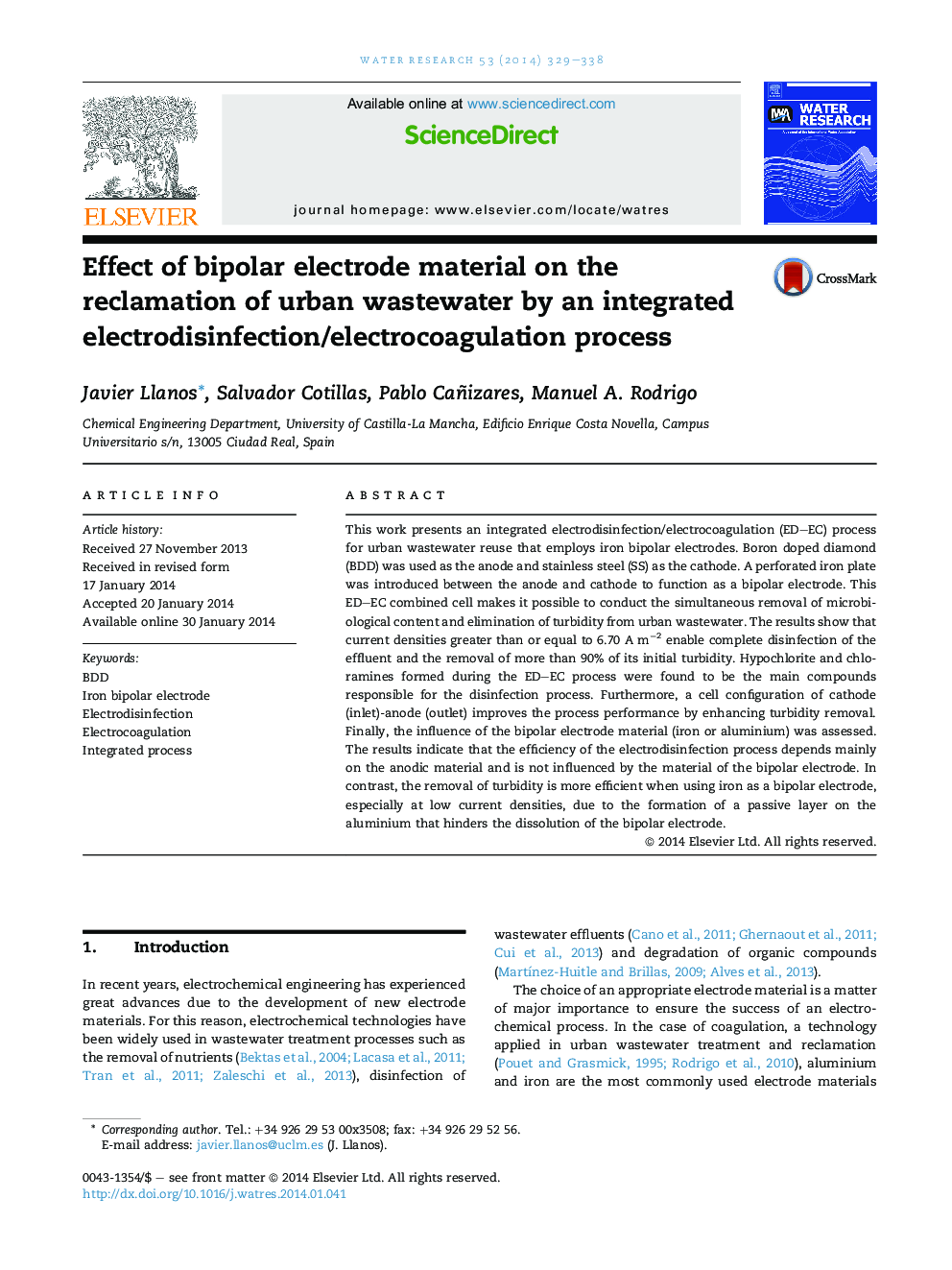| کد مقاله | کد نشریه | سال انتشار | مقاله انگلیسی | نسخه تمام متن |
|---|---|---|---|---|
| 4481613 | 1623115 | 2014 | 10 صفحه PDF | دانلود رایگان |
• Total disinfection and efficient turbidity removal with ED–EC and Fe electrodes.
• Hypochlorite and chloramines are the main responsible of the disinfection process.
• A flow path C–A enhances removal of turbidity.
• The disinfection process is not affected by the bipolar electrode material.
• Fe electrodes exhibit a better performance in the removal of turbidity than Al.
This work presents an integrated electrodisinfection/electrocoagulation (ED–EC) process for urban wastewater reuse that employs iron bipolar electrodes. Boron doped diamond (BDD) was used as the anode and stainless steel (SS) as the cathode. A perforated iron plate was introduced between the anode and cathode to function as a bipolar electrode. This ED–EC combined cell makes it possible to conduct the simultaneous removal of microbiological content and elimination of turbidity from urban wastewater. The results show that current densities greater than or equal to 6.70 A m−2 enable complete disinfection of the effluent and the removal of more than 90% of its initial turbidity. Hypochlorite and chloramines formed during the ED–EC process were found to be the main compounds responsible for the disinfection process. Furthermore, a cell configuration of cathode (inlet)-anode (outlet) improves the process performance by enhancing turbidity removal. Finally, the influence of the bipolar electrode material (iron or aluminium) was assessed. The results indicate that the efficiency of the electrodisinfection process depends mainly on the anodic material and is not influenced by the material of the bipolar electrode. In contrast, the removal of turbidity is more efficient when using iron as a bipolar electrode, especially at low current densities, due to the formation of a passive layer on the aluminium that hinders the dissolution of the bipolar electrode.
Figure optionsDownload high-quality image (161 K)Download as PowerPoint slide
Journal: Water Research - Volume 53, 15 April 2014, Pages 329–338
